When it comes to bold flavors, aromatic spices, and vibrant color palettes, few cuisines in the world rival the magic of Indian cooking. It’s a culinary tradition steeped in history, culture, and storytelling—each dish a mosaic of heritage and heart. But for beginners, Indian cooking can seem intimidating: long ingredient lists, unfamiliar spices, and seemingly complex techniques.
Fear not! Indian cooking is surprisingly approachable once you understand the foundational ingredients and techniques. Whether you’re a kitchen newbie or a home chef looking to broaden your horizons, this guide will help you unlock the wonders of Indian cuisine, one spice at a time.
Chapter One: The Spice Cabinet – Your New Best Friend
The heart of Indian cooking beats strongest in the spice box, or masala dabba—a circular container housing a rainbow of flavor. Here are the key spices every beginner should know:
-
Cumin (Jeera): Earthy and warm, cumin is often used whole in tempering or ground in spice blends.
-
Coriander (Dhaniya): Citrusy and nutty, this seed (and its leafy cousin, cilantro) is essential in many dishes.
-
Turmeric (Haldi): Known for its anti-inflammatory properties and golden hue, turmeric adds warmth and color.
-
Mustard Seeds: These tiny powerhouses pop in hot oil and lend a smoky, nutty flavor.
-
Garam Masala: A blend of warming spices like cinnamon, cloves, cardamom, and black pepper. Think of it as the finishing touch to many Indian dishes.
-
Chili Powder: Indian red chili powder is hotter and brighter than its Western counterparts. Use sparingly if you’re heat-sensitive.
-
Fenugreek (Methi): A slightly bitter herb that brings a uniquely savory depth, often used in North Indian cuisine.
Pro Tip: You don’t need to buy everything at once. Start with cumin, coriander, turmeric, and garam masala. Build your collection as you grow more confident.
Chapter Two: Building Blocks of a Dish
Before diving into specific recipes, it's essential to understand the structure of a typical Indian dish. While regional cuisines differ vastly, many follow a general framework:
-
Tempering (Tadka): This is the process of blooming whole spices in hot oil or ghee to extract maximum flavor.
-
Base: Usually onion, ginger, and garlic—often sautéed until golden brown to form a rich, aromatic foundation.
-
Tomatoes or Yogurt: These ingredients add acidity and depth, creating the body of a curry or sauce.
-
Spices: Ground spices are layered and cooked with the base to unlock their essential oils.
-
Main Ingredient: This could be vegetables, meat, legumes, or paneer (Indian cheese).
-
Liquid: Water, broth, coconut milk, or cream is added to adjust consistency.
-
Finish: Garnishes like fresh cilantro, lemon juice, or a dash of garam masala provide the final flourish.
Chapter Three: Essential Ingredients Beyond Spices
Indian cooking isn’t just about spices. Your pantry should also include:
-
Basmati Rice: Long-grained and fragrant, this rice is the perfect accompaniment to many dishes.
-
Ghee: Clarified butter that adds a luxurious, nutty flavor. Substitute with butter or oil if unavailable.
-
Lentils (Dals): Red lentils (masoor), yellow moong, and pigeon peas (toor) are high in protein and form the backbone of vegetarian Indian cooking.
-
Chickpeas (Chana): A staple in dishes like chana masala.
-
Paneer: A soft cheese that doesn’t melt, used in popular vegetarian dishes like palak paneer or paneer tikka masala.
-
Coconut Milk: Used heavily in South Indian cuisine for its rich, creamy texture.
-
Yogurt: Acts as a tenderizer, base for sauces, and cooling side dish (raita).
Chapter Four: Must-Try Beginner Recipes
1. Dal Tadka (Spiced Lentils)
Simple, comforting, and endlessly customizable.
Ingredients:
-
1 cup red lentils (masoor dal)
-
1 tsp turmeric
-
Salt to taste
-
1 tbsp ghee or oil
-
1 tsp cumin seeds
-
2 cloves garlic, sliced
-
1 dry red chili (optional)
Instructions:
-
Boil lentils with turmeric and salt until soft.
-
In a separate pan, heat ghee and add cumin seeds, garlic, and red chili. Let them sizzle.
-
Pour this tempering over the cooked lentils. Stir and serve hot with rice.
2. Chana Masala (Chickpea Curry)
A hearty, protein-rich dish that’s a North Indian favorite.
Ingredients:
-
1 can chickpeas, drained
-
1 onion, finely chopped
-
1 tomato, pureed
-
1 tsp cumin seeds
-
1 tsp coriander powder
-
1/2 tsp turmeric
-
1 tsp garam masala
-
1/2 tsp chili powder
-
Salt to taste
-
Fresh cilantro for garnish
Instructions:
-
Sauté onions until golden. Add spices and cook until fragrant.
-
Add tomato puree and cook until oil separates.
-
Add chickpeas and a splash of water. Simmer for 15–20 minutes.
-
Garnish with cilantro. Serve with rice or flatbread.
3. Vegetable Pulao (Spiced Rice Pilaf)
A quick, one-pot meal that’s colorful and kid-friendly.
Ingredients:
-
1 cup basmati rice
-
2 cups water
-
Mixed veggies (peas, carrots, beans)
-
1 tsp cumin seeds
-
1 bay leaf
-
2 cloves
-
Salt to taste
Instructions:
-
Sauté whole spices in oil or ghee.
-
Add vegetables and rice. Stir to coat.
-
Pour in water, season, and bring to boil.
-
Cover and cook until rice is done. Fluff with a fork.
Chapter Five: Tools of the Trade
While traditional Indian kitchens may use a tawa (flat griddle), pressure cooker, or spice grinder, you can manage perfectly fine with modern substitutes:
-
Heavy-bottomed pan or Dutch oven for curries
-
Non-stick or stainless-steel skillet for sautéing
-
Blender or food processor for pastes
-
Instant Pot or stovetop pot for cooking lentils and rice
Pro Tip: A small coffee grinder makes a great spice grinder if you want to grind whole spices at home.
Chapter Six: Regional Flavors to Explore
Once you’ve mastered the basics, Indian cuisine opens up like a treasure chest. Each state has its own culinary identity:
-
North India: Creamy curries, rich gravies, tandoori meats, and breads like naan and paratha.
-
South India: Coconut-based dishes, tangy tamarind flavors, and crispy dosas.
-
West India (Gujarat, Maharashtra): Sweet-and-sour dals, the use of peanuts, jaggery, and pickled vegetables.
-
East India (Bengal): Mustard oil, fish, and sweets like rasgulla dominate the plate.
Your Indian cooking journey can be as diverse as the country itself.
Chapter Seven: Common Mistakes Beginners Make
-
Using too much spice too soon. Start small; you can always add more later.
-
Skipping the tempering. This step enhances flavor more than you realize.
-
Not cooking the base long enough. Onions and tomatoes should be well-cooked to avoid a raw taste.
-
Rushing. Indian cooking requires patience, especially when building flavors.
-
Overcrowding your dish. Let each spice and ingredient shine.
Chapter Eight: Balancing Flavor – The Indian Way
Indian cooking is an art of balance. Sweet, sour, salty, spicy, and bitter flavors often coexist in a single dish.
-
Too salty? Add a squeeze of lemon juice or a spoon of yogurt.
-
Too spicy? A dollop of cream or sugar can mellow the heat.
-
Too sour? A pinch of sugar can neutralize the tang.
-
Too bland? Bloom additional spices in hot oil and stir them in at the end.
Chapter Nine: Putting It All Together – A Sample Meal
Menu for Two:
-
Starter: Vegetable Pakoras with Mint Chutney
-
Main: Chana Masala + Jeera Rice (cumin rice)
-
Side: Cucumber Raita
-
Dessert: Mango Lassi or store-bought Gulab Jamun
Even this small spread can turn your kitchen into a colorful Indian bistro for the evening.
Final Thoughts: Cooking with Curiosity and Confidence
Don’t worry about being perfect—Indian cooking is about intuition as much as instruction. With every dish, you’ll learn something new: the sizzle of cumin in oil, the scent of turmeric blooming, the joy of turning humble lentils into soul-satisfying comfort food.
Remember: every great Indian cook started with a pinch of curiosity and a spoonful of boldness. So tie on that apron, grab your spice box, and spice it up!
Namaste—and happy cooking.
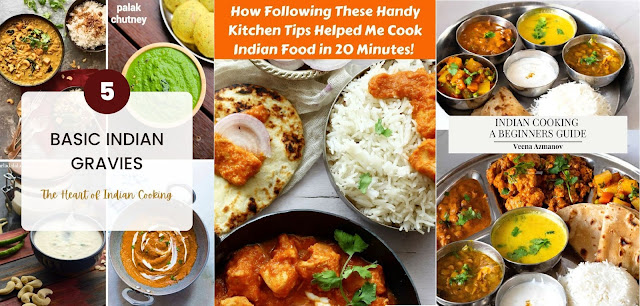








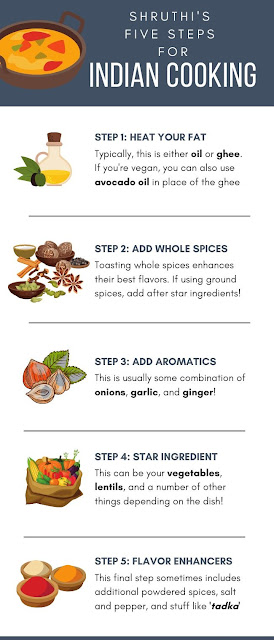






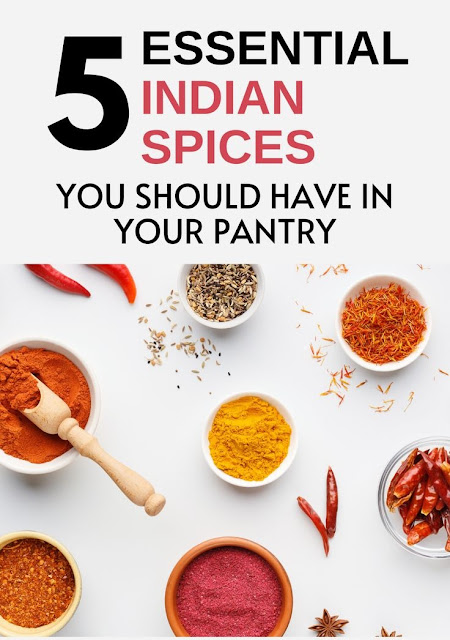


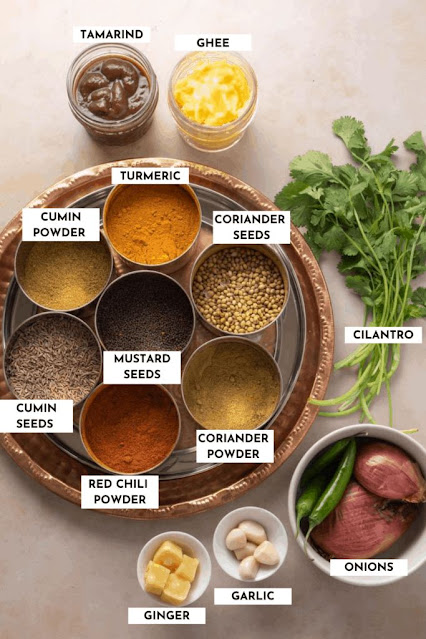
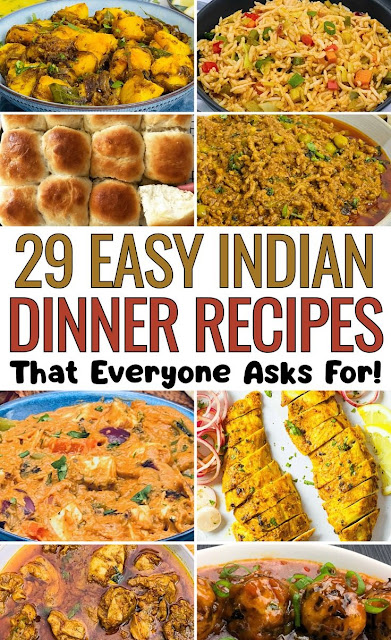











.png)
.jpg)
.jpg)
.png)
.jpg)
0 comments: